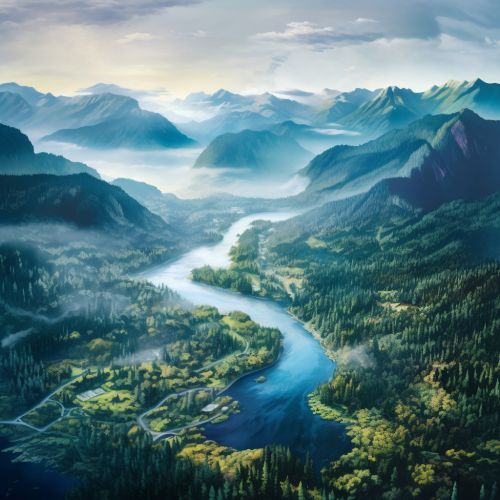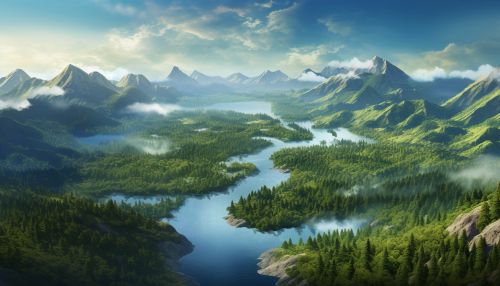Eurasia
Geography
Eurasia is the largest landmass on Earth, comprising all of Europe and Asia. The term is a portmanteau of its two constituent parts: Europe and Asia. It spans from the Atlantic Ocean in the west to the Pacific Ocean in the east, and from the Arctic Ocean in the north to the Indian Ocean in the south.


The geographical boundaries of Eurasia are typically defined as the Ural Mountains and the Caspian Sea in the west, the Bering Strait and the Arctic Ocean in the north, the Pacific Ocean and the Indian Ocean in the east and south respectively. However, these boundaries are not universally accepted, and some geographers prefer alternative definitions.
Geology
The geology of Eurasia is complex, as it encompasses the geological histories of two different continents. The oldest rocks in Eurasia, found in the Baltic Shield, are over 3.5 billion years old. The region is also home to the world's largest collection of Siberian Traps, a large region of volcanic rock known as a large igneous province.
Climate
Eurasia spans multiple climate zones, from the Arctic climate of Siberia and Northern Scandinavia to the deserts of the Middle East and Central Asia, to the tropical rainforests of Southeast Asia. This vast range of climates contributes to the continent's diverse range of flora and fauna.
Flora and Fauna
Eurasia is home to a diverse range of biodiversity, with a multitude of different ecosystems. The continent is home to many large mammals, such as the Siberian tiger, the Brown bear, and the Snow leopard. The continent's diverse bird species include the Bald eagle, the Common kingfisher, and the Siberian crane.
Human Geography
Eurasia is home to approximately 5 billion people, or around 70% of the global population. The continent includes some of the world's most populous countries, including China, India, and Russia. It is also home to a multitude of different cultures, languages, religions, and political systems.
History
The history of Eurasia is the collective history of several distinct peripheral coastal regions: Europe, South Asia, East Asia, and the Middle East linked by the interior mass of the Eurasian steppe. The coastal periphery was the home to some of the world's earliest known civilizations, each of them developing around fertile river valleys.
